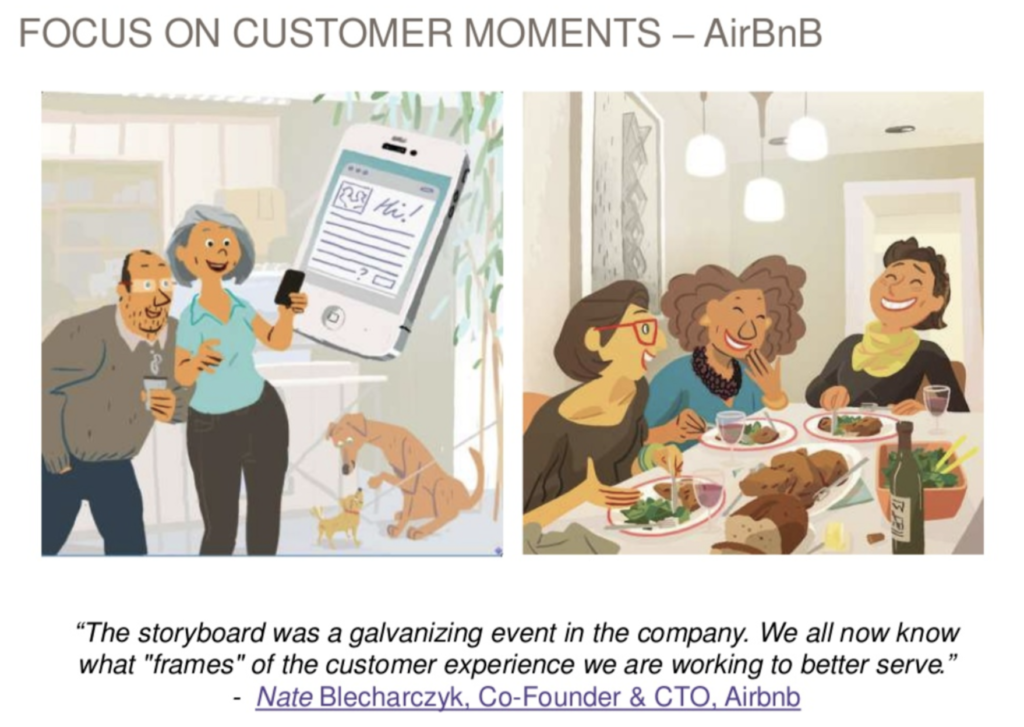
A recent survey from Accenture revealed that 86% of B2B executives consider customer experiences to be very important yet 57% of them admitted that they lack sound strategy and the ability to execute well. Companies are being confronted with difficulties in reaching their target audiences and the challenges of managing customer feedback and comments in social media. Firms have responded by attempting to integrate business functions like IT, marketing, HR, logistics, and operations to deliver a positive customer experience.
We have never had access to as much data as we do now and this is in part creating the problem. Each day internet users generate 2.5 quintillion bytes of data per day. This is the equivalent of 10 million Blu-ray discs, which if stacked on one another, would measure the height of 4 Eiffel Towers. 90% of the data we have today was generated in the past two years.
As I heard Manish Bhatia, CEO of Kantar Media, put it at a conference several years ago, we are suffering from the problem of plenty. We have access to plenty of data but we often don’t draw the right conclusions from the data. This is a bit like using Google Maps to walk down the street without looking out for potholes. When it comes to understanding customers, we are often guilty of measuring the wrong things and not asking the right questions. What is needed is the right mental model and measurement framework to understand customer needs by identifying the customer journey to deliver better customer experiences.
Customer Journey and Customer Experience Model
In the Journal of Marketing, November 2016, Katherine Lemon and Peter Verhoef describe the stages of the customer experience and the customer journey. The customer experience process flows from pre-purchase to purchase and post-purchase. The process is dynamic, iterative, and nonlinear in terms of customer touch points that are encountered.
Key customer touch points along the buying journey are made of the following categories:
- Brand-owned (websites, advertising, packaging, sales force, price, product attributes)
- Partner-owned (marketing agencies, distribution partners, loyalty programs in travel marketplace)
- Customer-owned (IKEA hacking, product instructional videos, unboxing videos)
- Social/external (third party review sites, WOM (discussion after movie, theme park ride, mobile app usage))
Organizing a framework using these touchpoints helps firms identify the points in the journey that they can control or influence vs. others that they have very little influence over. Understanding the nuances of why customers make the decisions they make is critical in creating innovative solutions.
In a recent Harvard Business Review article titled Knowing Your Customers’ Jobs to Be Done, Clayton Christensen makes an important point about the race to collect and analyze customer demographic data to discover customer insights. Focusing on correlation to discover more about customers does not deliver the fundamental insights we need to do better marketing. Knowing that a consumer drives a certain make and model of car and lives in a certain neighborhood says little about why he listens to Taylor Swift instead of Bruno Mars for example.
The insight we need is why customers make purchase and consumption decisions not information about who they are. Understanding how customers make choices along their journey to purchase is the foundational element needed to get to the drivers behind a purchase. The key insight that Christensen makes is that customers hire products to complete specific jobs and when those jobs are not completed satisfactorily, customers look for other alternatives to complete those jobs.
We will take a look at two examples of how understanding customer journey details and the jobs to be done along the way can influence product development and marketing decisions.
Airbnb: Using Storyboards to Map The Customer Journey
Airbnb understood insights about the customer experience that allowed them to disrupt the travel market. The fundamental core of their value proposition is to create the feeling of staying with a local when visiting a new city. This is an experience that a hotel could not provide and therefore they were able to swim in a blue ocean instead of taking on hotels directly. To create this ecosystem, the Airbnb team created storyboards for 45 different emotional moments for hosts and guests.

Source: Deb Aoki
The team created these storyboards to form a mini-documentary of the jobs that Airbnb is hired by hosts and guests to perform. In a Fast Company interview, Airbnb CEO Brian Chesky recounts the value of using storyboards to uncover jobs to be done. “When you storyboard something, the more realistic it is, the more decisions you have to make,” CEO Brian Chesky told Fast Company. “Are these hosts men or women? Are they young, are they old? Where do they live? The city or the countryside? Why are they hosting? Are they nervous? It’s not that they [the guests] show up to the house. They show up to the house, how many bags do they have? How are they feeling? Are they tired? At that point you start designing for stuff for a very particular use case.” The Airbnb storyboards, constantly tweaked and improved since its founding, reinforce the importance of the experience customers are seeking when they hire Airbnb.
To make it an official storyboarding process, Airbnb hired Pixar animator, Nick Sung, to produce final copies of three stories: the host process, the guest process, and the hiring process. The storyboards now hang prominently in its headquarters.
Intercom: When Personas Aren’t Enough
Intercom, a customer messaging platform, had been using a persona-based segmentation approach to marketing the early version of their service. This approach created limitations in understanding how to market and price the platform. The team at Intercom realized that using traits like demographics or job titles didn’t provide insights into what users were trying to accomplish with the service and why they were using it in the first place. Intercom hired innovation consultant Bob Moesta to conduct interviews with two types of users: users who had recently signed up and users who canceled the services or dramatically decreased their usage. This is also a core part of Walk West’s approach to Discovery–talking to our clients’ customers so that we can hear how they describe their experiences.
Moesta has a theory that can be described as the struggling moment–the conflict that comes when customers consider a new purchase and the anxiety and fear of change that present barriers to selecting a solution. Moesta discovered the following when completing the interviews–“Companies fall in love with their own jargon. They focus on the technology being offered rather than the value being delivered.” Through this process of discovering jobs that Intercom customers were doing, Intercom created four distinct services rather than a one-size-fits-all platform. They have seen their conversion rates increase, and this has created opportunities for upsell and cross-sell through deeper customer relationships.

